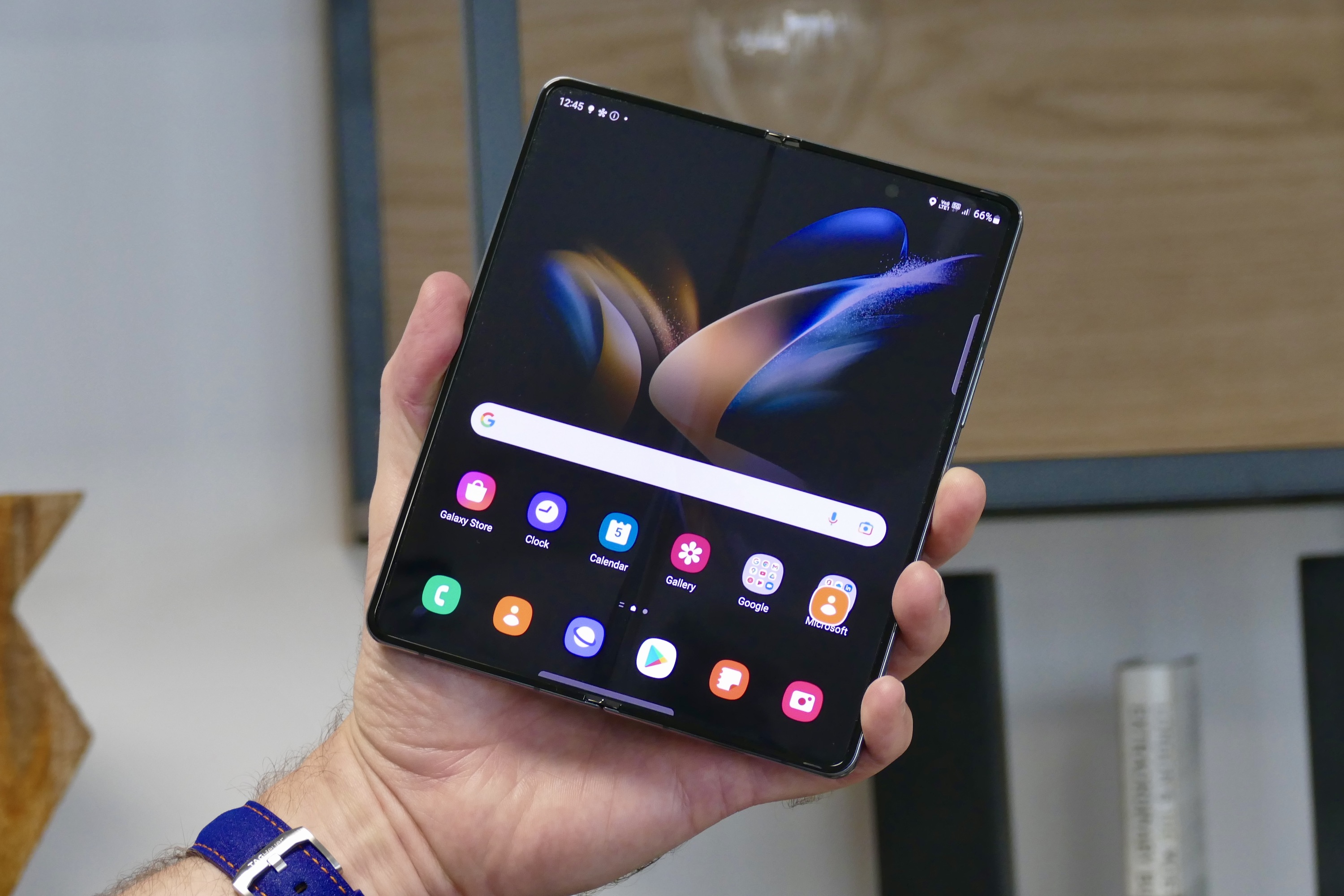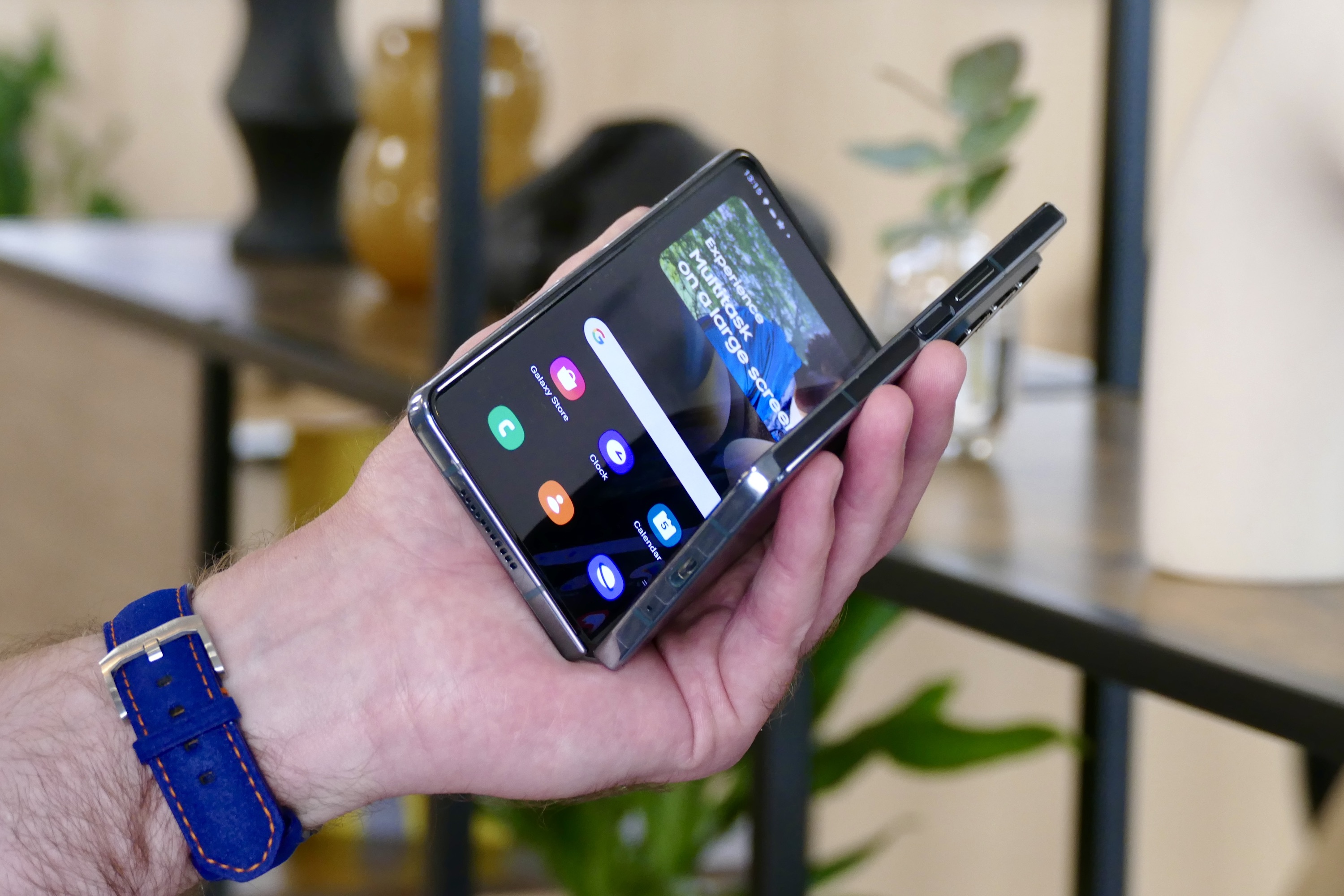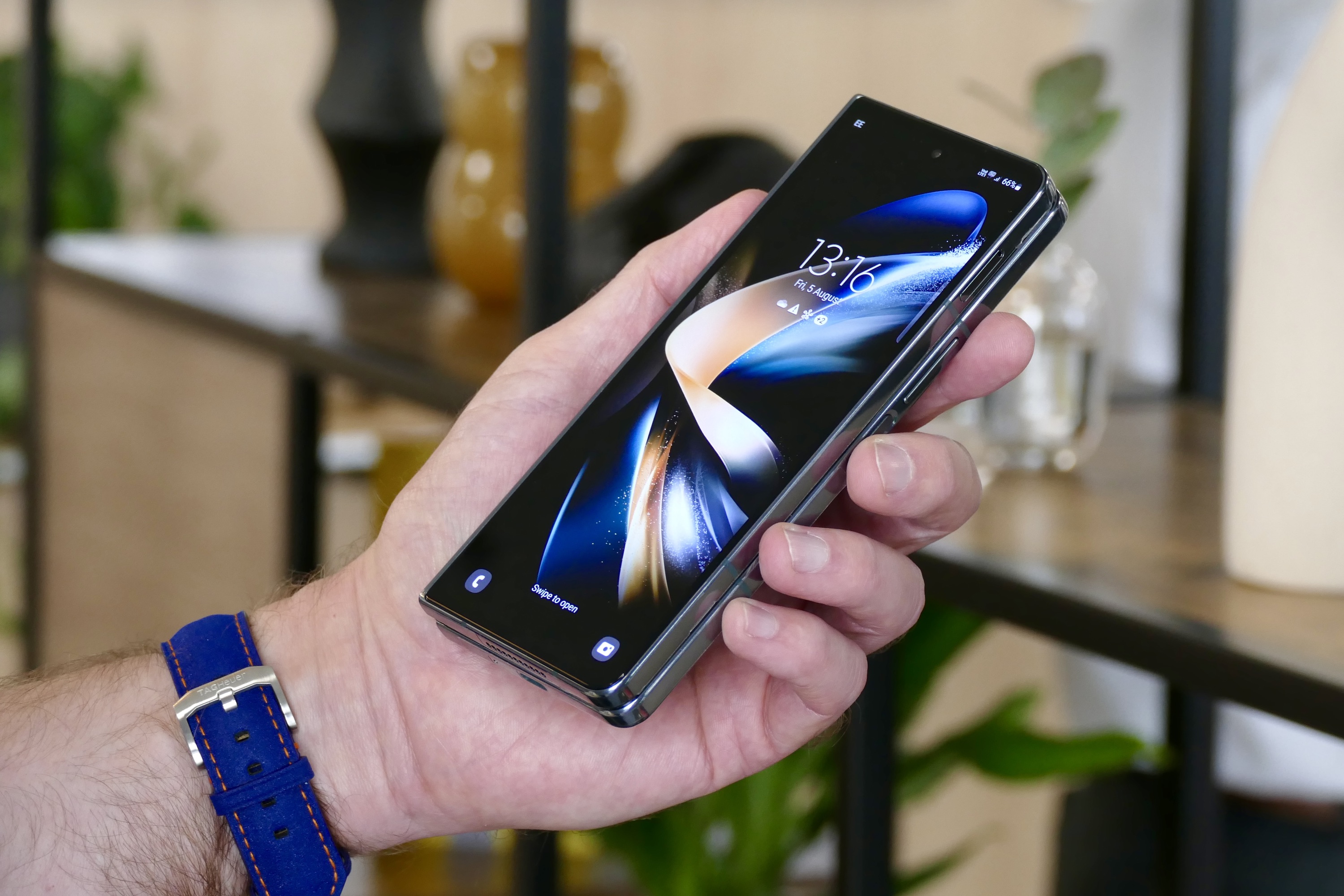The Galaxy Z Fold 4’s physical dimensions have changed. The alterations may not amount to more than a few millimeters and grams, but they make a surprising difference to the way the phone feels — and a redesign of the hinge played a big role in making it possible. It’s an important step toward making foldable smartphones mainstream, a moment Samsung believes is now almost here.
Digital Trends spoke to Nick Porter, Samsung UK and Ireland’s vice president of product management and commercial operations, about the new phones, the mainstream appeal, and the all-important new hinge design.
It all hinges on this
“We genuinely listen to feedback,” Porter told me, and said for the Z Fold 4, customers had asked Samsung for improved one-handed operation and a different ratio screen. It has delivered a 21.6:18 aspect ratio internal screen that’s 3mm wider than the 22.5:18 screen on the Z Fold 3, and the cover screen has changed from a 24.5:9 ratio to a 23.1:9 ratio.

When folded and unfolded, the Z Fold 4 is a hair thinner and eight grams lighter than the Galaxy Z Fold 3. Although the Fold 4 has the same width when closed, the device is shorter by 3mm, and smaller bezels make the cover screen viewing area appear larger. The change in aspect ratio on the inside screen means, when watching a video, any black bars will be smaller.
“The 3mm increase in width and shortening of the phone means when its closed, operation is more seamless, and you can use it effectively with one hand without losing the benefit of opening it out into a big screen.” Porter explained. “We’ve made it slimmer and lighter, changed the aspect ratio, and made the phone 6% lighter, and a lot of that’s down to the work we’ve done in the hinge.”
For the first three Fold phones, Samsung used horizontally mounted gears for articulation, but it has been redesigned for the Z Fold 4. “By turning the rotational movement [of the gears] into a linear movement, we have reduced the amount of gearing needed, making it slimmer and shorter so it fits into a smaller space,” Porter said, emphasizing how the hinge enabled the rest of the Z Fold 4’s alterations.

All this hasn’t come at the expense of durability either, and the hinge still has the innovative system of brushes inside to clear dust and add lubrication, plus an IPX8 water-resistance rating. It has been tested to 200,000 folds, which is approximately the same as folding and unfolding the phone 100 times a day for the next five years.
Mainstream appeal
“I think this is the moment where foldables go mainstream,” Porter confidently told me. “We started developing foldables in 2011, we’re now in our fourth generation, and we’ve really learned a lot. We’re now creating foldables not just for early adopters, but for everyone.”
While the folding screens of the Galaxy Z Fold 4 and Z Flip 4 capture interest first, we should also remember these are the most powerful smartphones Samsung has released to date, each being equipped with the new Qualcomm Snapdragon 8+ Gen 1 processor.
“The Z Fold 4 has the fastest processor we’ve ever put in a phone, an enhanced battery, the foldable screen with 1000 nits brightness, and PC-like performance,” Porter said. “When we look at the Z Flip 4, we’ve focused on the “pocketability” as its 10% thinner, has an enhanced cover screen, and the best compact camera phone we could fit. We’ve enhanced the functionality and performance of these products in order to bring next-generation tech out today.”

Having two phones that appeal to different people is a key step toward mainstream adoption, which according to figures shared by Porter, is closer than you may think.
“Last year, the total foldable market was 10 million units, a 300% increase from 2020. And for the U.K., over the first half of 2022, we saw sales increase by 700% compared to the first half of 2020. We’re seeing that momentum coming through in demand. We’re well on the way to making foldables mainstream. Having the right products, together with rapid market growth and listening to our customers, we can see that the pivot is now happening towards the mainstream.”
Getting your hands on one
It’s all very well hearing about more power and a flashy new hinge, but despite Samsung being four generations in, many people haven’t used a folding smartphone at all yet.
“What we’ve learned is people want to experience the new technology,” Porter said. “But how do we create experiences for them to touch and feel the product, fold it, see the benefits of the screen?”
One answer is in the creation of two giant, immersive, and innovative pop-up stores in the center of two of the busiest cities in the world.
“It’s why we have the new experience stores in London and New York, where people can come and experience the phones, Galaxy Watch 5 smartwatches, and Galaxy Buds 2 Pro headphones.” Porter also revealed that many more retail locations will have foldable phones available to try in-store this year. “Last year, 20% of the mobile phone shops in the U.K. had a foldable on display, but this year, 80% will have a foldable device people can try.”
The secret to understanding the benefits of and, in turn, wanting a foldable smartphone is by actually using one. Samsung’s Z Fold 4 and Z Flip 4 are not only more “normal” than ever, but it’s easier — and if you got to one of the experience pop-ups, quite a lot more fun — to actually go out and try one before you buy too.
“It’s so important when technology is moving so quickly,” Porter said. “Seeing is believing with these products.”






